Franciscan Crown Rosary (The Seven Joys of the Virgin), 18th century
Gold, jet, and enamel.
Further images
-
(View a larger image of thumbnail 1
)

-
(View a larger image of thumbnail 2
)

-
(View a larger image of thumbnail 3
)
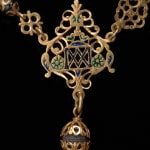
-
(View a larger image of thumbnail 4
)
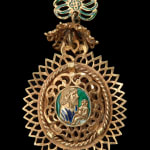
-
(View a larger image of thumbnail 5
)
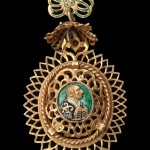
-
(View a larger image of thumbnail 6
)
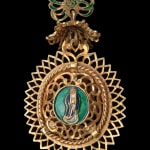
-
(View a larger image of thumbnail 7
)
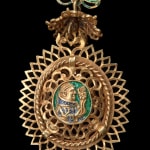
-
(View a larger image of thumbnail 8
)
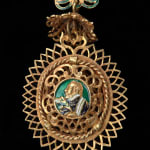
-
(View a larger image of thumbnail 9
)
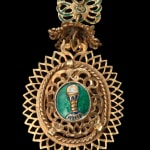
The devotional practice consisting in repeating certain prayers in groups of sections that are organized in regulated number and order derives from Eastern religions, based on the idea that repeating a prayer increases its effectiveness, and has been brought to the Western world by the expansion of the Muslim Empire. In order to make it easier, closed strings of beads have been used to avoid losing them and to help complete the prayer, such as the Islamic tasbih, the Hindu and Buddhist Japamala, or the Catholic rosary or crown.
In Spain and its historical, eminently Catholic territories, the use of the rosary has been universal and constant over time, until it has become one of its marks of cultural identity. Countess d'Aulnoy, on her celebrated work Un viaje por España en 1679, testified to “the constant use of the rosary here. Every lady has one attached to her waist, which is so long that it is almost dragged along the ground. They pray while walking down the street, when they play ombre, when they talk, and even when they fall in love, murmur, or lie, they pray and move their fingers from one rosary bead to another”. Even Mariana of Austria, King Charles II's mother, during the hearing that was granted to her in the Alcázar of Madrid, received the French lady carrying a large rosary in her hands.
read essay








